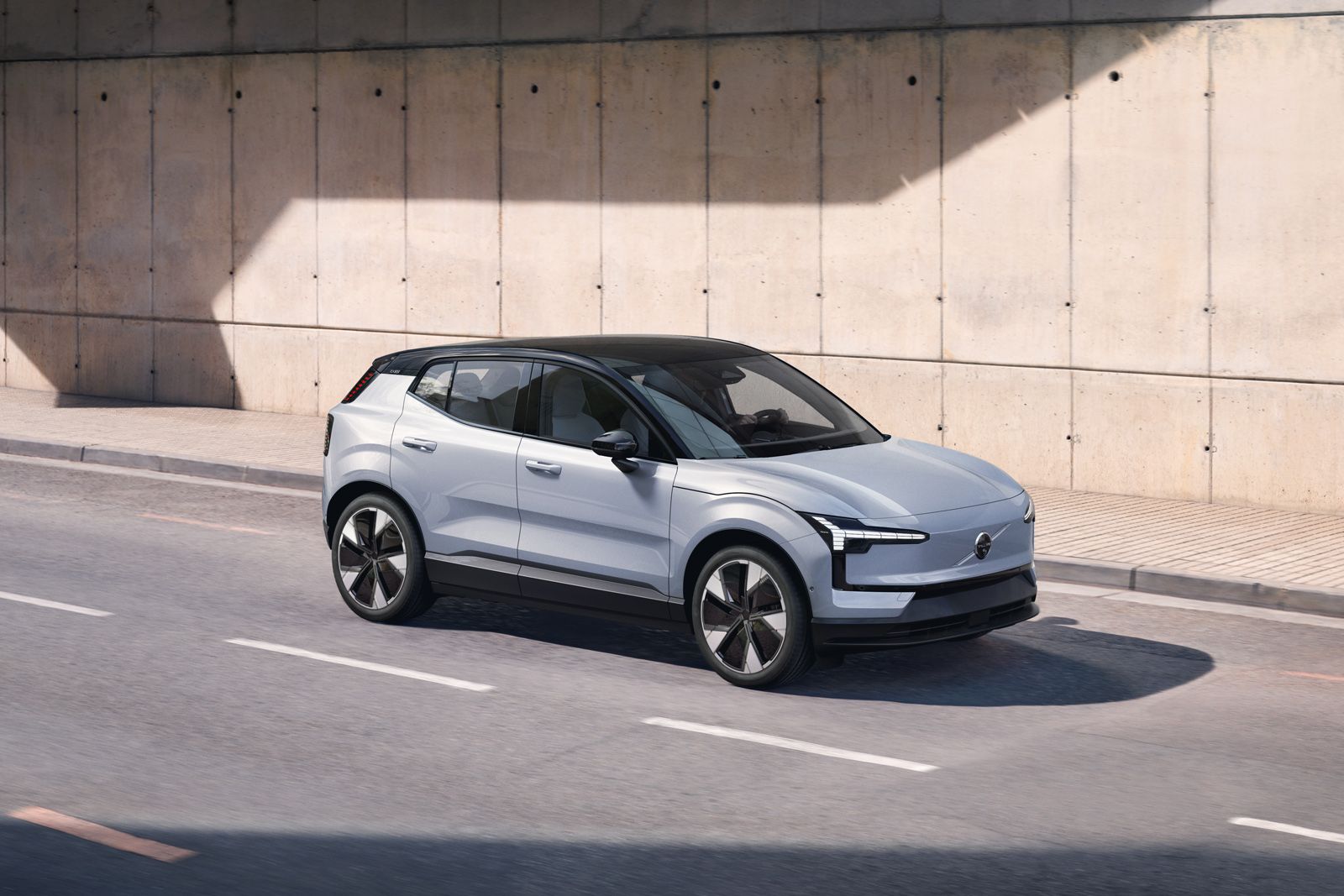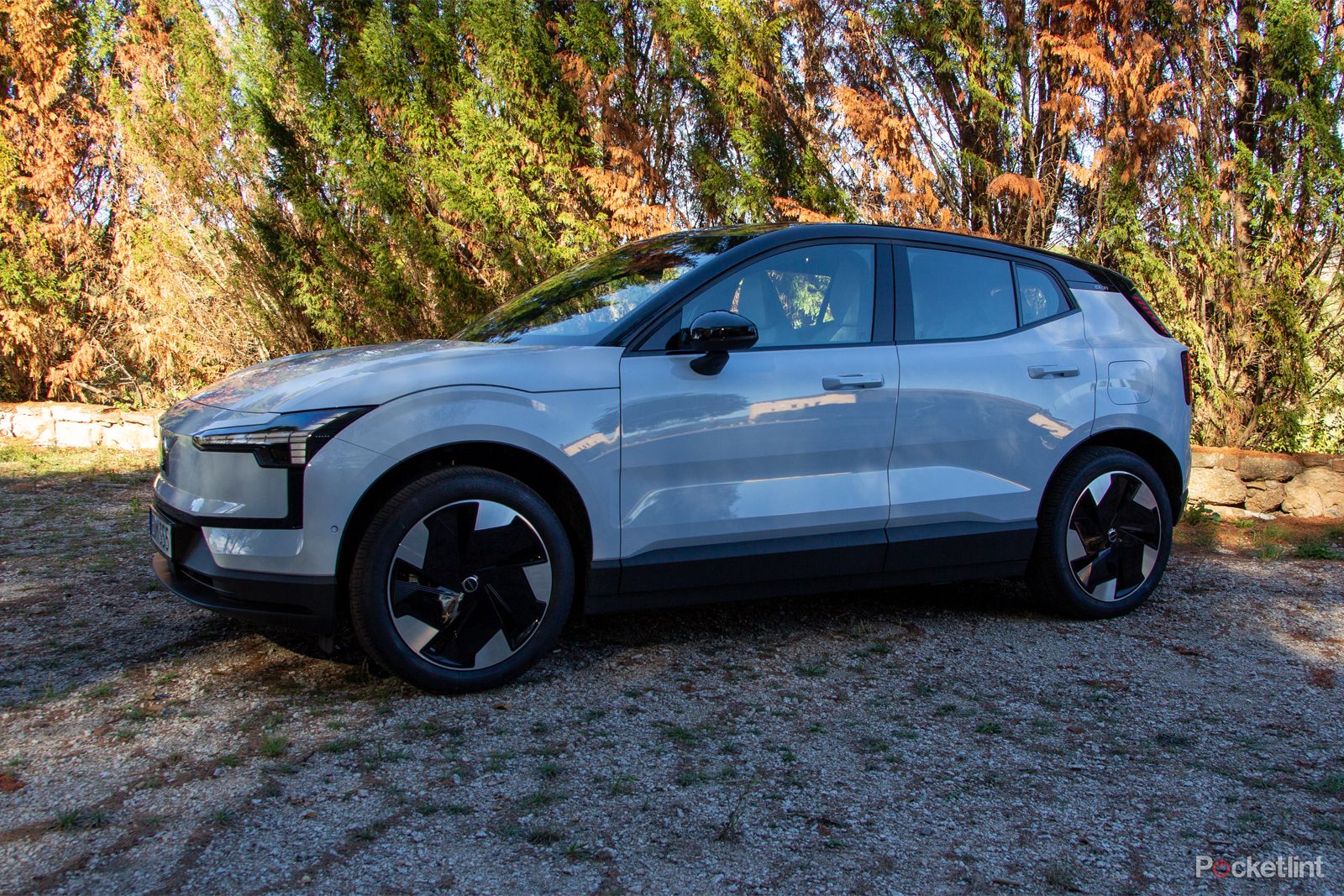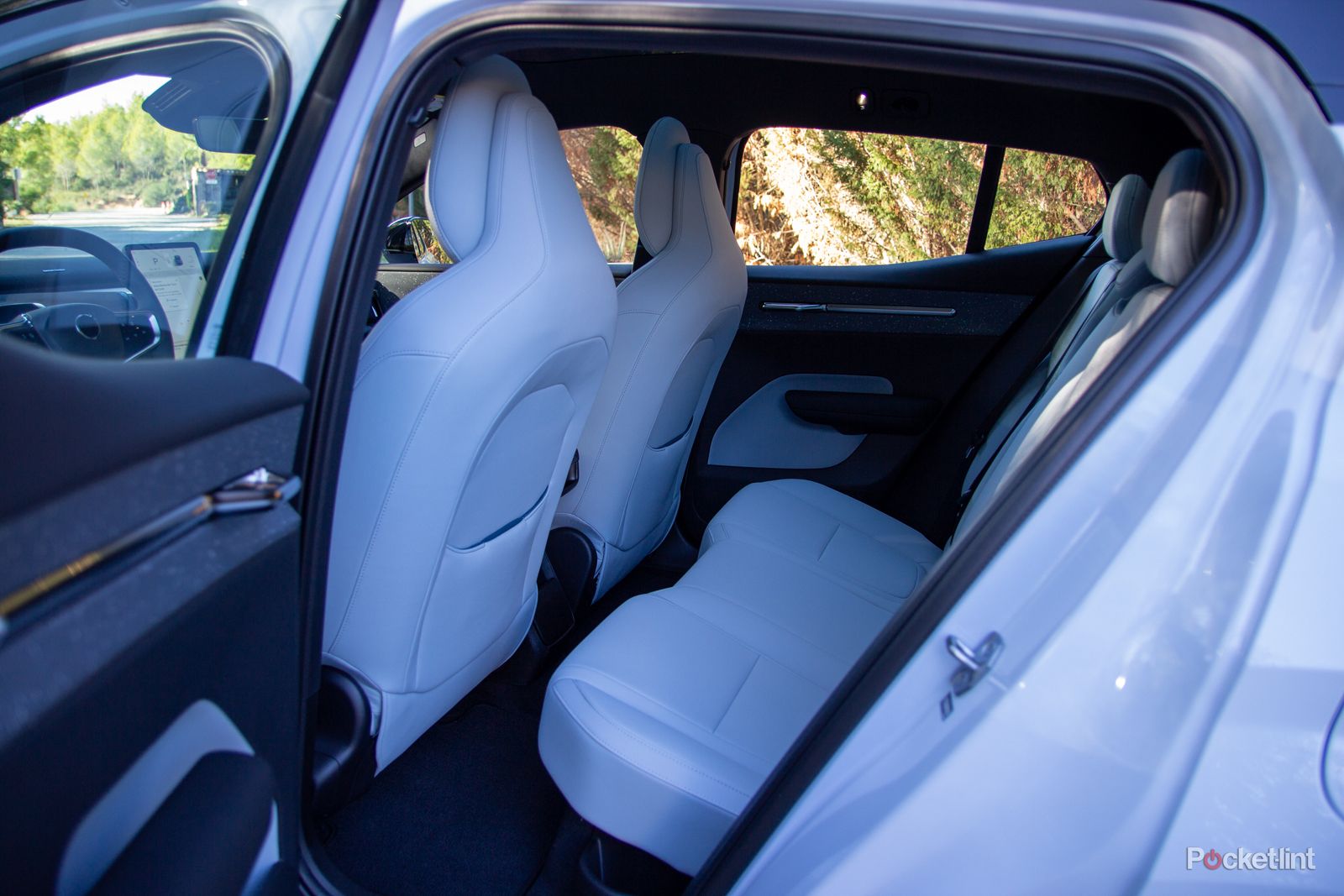The Volvo EX30 is part of a new wave of electric cars, aiming to drag prices down without too many compromises. The aim is to deliver more affordability and make Volvo more accessible, which might also attract people to the brand. The Swedish company is best known for its chunky wagons and big SUVs - the XC90 being the flagship of the old guard. With a more compact SUV, Volvo is aiming squarely at younger buyers, those wanting the benefits of the brand - all that safety technology - and an affordable electric car.
As a result, the EX30 is a big part of Volvo's plans, adopting elements of the (still to be released) Volvo EX90 and making quite the departure from the C40 Recharge that sits above it. But in getting to this point, has Volvo had to cut too many corners?

Volvo EX30
Prices from £33,295 / $34,950
The Volvo EX30 presents a more affordable Volvo to buyers in the competitive compact SUV segment. It looks great, but opts for minimalist interior design - in some cases leaning too heavily on the touchscreen for control. But is comfortable and refining to drive, with some impressive performance figures.
- Great looks
- Quiet and comfortable ride
- Attractive entry-level pricing
- Steering a little disconnected
- Touchscreen for everything
- No driver display
Design and build
Plenty of Volvo design cues
There's a reinforced eco message that's sewn into the fabric of every new car launch; with gas-guzzlers being the target of so much scorn, automotive brands are keen to stress just how much sustainable and recycled material makes up their cars. That's as true of Volvo as it is of other brands. The Volvo EX30 makes a feature of it, using its eco materials to deck the interior of the car with a unique finish. It's not just black plastic; it's recycled or a new reclaimed material.
From the exterior, the EX30 looks exactly as you'd expect a scaled-down Volvo to look. You can see the hallmarks of Volvo design all over the place, with the Thor's Hammer headlights and tidy segmented lights to the rear making for a smart finish. The use of black elements on the exterior provides a great contrast for the colours, giving the car definition. Again, the message is about the 25 per cent recycled aluminium and 17 per cent recycled steel, aiming to give this car the lowest carbon footprint of any Volvo so far.
As for the looks, Volvo previously told me that the exterior design did take some inspiration from helmets in sci-fi movies, and that's something that's drawn out through the contrast between black and white on this model. It's the electric car of Star Wars First Order, perhaps.
A minimalist interior
Packed full of eco-materials
Volvo has been moving towards minimalism for some time. That was apparent in the Volvo XC40 Recharge and Volvo C40 Recharge that came before this model - but with the EX30, there's something different going on. This isn't just about minimalist design - something that's often embraced as "Scandinavian" - instead, there's a feeling that the EX30 has been built to a price. Again, that's not unheard of, and it's something that the Tesla Model 3 embraces, but there will be some who might struggle to accept minimalism and see basic instead.
With that in mind, the interior is free from clutter. Most surfaces are harder, but there's the eco story that I've already mentioned: weaving in different sustainable or reclaimed materials to make for a unique finish. But at the same time, there's a reduction in switch gear, the removal of the driver display and the move towards a big central display for everything - again, as found in the Tesla Model 3.
The front seats are comfortable, and the driving position is commanding. It's a compact SUV, but the ride height will be appealing, affording good visibility. The seats are comfortable, and I personally like the overall seat design and headrests. The rear seats offer less space, and this is somewhere that feels a little more compromised, as adults might find it a bit of a squeeze, especially when it comes to knee space.
There's 318 litres of boot space in the rear, which is a little small - the Kia Niro EV manages 415 litres - for example. There are other stowage places around the interior, with a central glovebox (rather than in front of the passenger). This is a little novel in terms of location, and the only way to open it is via a touchscreen button, which is perhaps a little fussy.
The centre console forms an armrest between the front seats, cut away to offer a tray between the front footwells. I'm reliably informed that these spaces are popular with the handbag-carrying classes, as it means you can put the bag in a decent-sized space rather than in the footwell or on a seat. This area also has a few slots where you could slip a mobile phone, with wireless charging offered.
Tap the front of the centre console, and you can deploy a tray with cupholders, so those can be neatly tucked away when not in use - or not used at all if you prefer.
Similarly, there's a tray around the back of the centre console. It just sort of slides out, providing storage space for the rear passengers, but it is a plastic bin tucked in there. Again, it's a novelty, but again, it reinforces that niggling feeling that things are perhaps a little cheaper than they needed to be.
There are two trim levels - Plus and Ultra - with four "rooms" (Breeze, Indigo, Mist, Pine), which are essentially the interior designs. The standard trim level gives you quite a lot: heated seats, adaptive cruise control, Pilot Assist, lots of safety features, the Harman Kardon soundbar, for example - with the Ultra gaining a panoramic sunroof, 360-degree cameras and more.
The soundbar is worth a mention because I found the performance of it to be pretty good. Instead of fixing speakers around the cabin, the EX30 has this single soundbar across the top of the dash below the windscreen. Again, it's sold on its virtues for offering a wide soundstage and so on, but it again means the door construction is simpler, and simpler means … cheaper. But that aside, I really enjoyed the soundbar music delivery and would be interested to see more manufacturers using this approach in the future.
Interior technology
Centred around one touchscreen
The soundbar gives a great segue into the rest of the interior tech, and there's quite a lot to say here. Volvo has opted for a single, portrait-mounted, 12.3-inch display. It runs Android Automotive, offering the full Google Automotive Systems experience, which will be familiar to owners of recent Volvo models or, indeed, Android phone users.
But the display is used for just about everything. As I mentioned, there's no driver display, so the top of the central display houses an area that will always give you pertinent driving information - speed, detection of other vehicles (again a la Tesla) range, speed and so on. Below this, you have the main area, which is used for mapping and navigation, menus and so on, with the bottom offering shortcuts and a row to access things like climate controls.
It takes a little time to get used to, and it does mean there's a screen to tap to make quick adjustments, rather than being able to turn a dial or something more tangible for climate change. Other adjustments are made through the screen too, such as accessing the wing-mirror controls or changing the settings for things like one-pedal driving. It takes a little longer to get to what you want, and it's a move from the conventionality of having, for example, wing mirror adjustments in the door panel.
The steering wheel plays into this, offering touch controls, but these are a little generic, while the steering column carries two stalks: one for the indicators, lights and wipers, and the second for drive controls, including Pilot Assist (the self-driving mode). Again, it's very Tesla in its approach.
The indicators, bizarrely, seem rather indistinct. I often found them either not engaging (so they cancelled after three pulses) or not cancelling, so after making a move, I'd have to do it manually. It just seemed like something wasn't quite right with a simple and commonplace function.
Being able to flick the drive stalk down to turn on Pilot Assist is handy, though, engaging the adaptive cruise control, lane guidance and steering support so the car effectively then drives itself. Pilot Assist seemed to do a good job on the roads I tested it on, but this is a system where you still need to keep your hands on the wheel.
Turning to the interface and the display, and I didn't find it too difficult to get around. That partly comes from using Android Automotive systems before - and being generally familiar with Android - but there is a feeling that some settings are a bit deep. This will be the first thing that new drivers to the car experience, and it takes some time to dig around and adjust everything you want. At the same time, the absence of a volume knob will likely be irritating, requiring a jab of a finger on the display to access volume controls.
Mapping, however, seems pretty good. As this is a Google-based system, it uses Google Maps Navigation by default and benefits from Google Search - along with support for Google Assistant voice controls. Generally, there's a high degree of accuracy when it comes to searching for destinations.
As this is an Android-based system, you have access to apps that support Android Automotive, and that includes Waze for those who want to use that system, but on the entertainment front, it includes the likes of Spotify. You'll have to sign in to your account, of course, and Volvo reassured me that multiple users can sign in with different profiles so that you get access to the right account.
The display generally divides itself up to offer widgets for music and phone functions beneath a main application window in the centre and that driving information at the top. In many ways, it's an evolution of previous systems from Volvo; it's the same as will land in the EX90 when it launches, and it's a similar experience to Tesla in many ways.
If you want to bypass the Android side of things, it supports Apple CarPlay wirelessly, so you can connect your iPhone and just use those systems instead.
Drive, range and performance
With Tesla-bothering acceleration
There are three different powertrains on the EX30: Single Motor (RWD), Single Motor Extended Range (RWD) and Twin Motor Performance (AWD). There are two battery capacities, 51kWh and 69kWh, the larger battery powering the Extended Range and Twin Motor Performance models.
The smaller 51kWh battery supports 150kW peak charging, while the larger battery gets 175kW charging. The change in peak charging rates and battery capacities means that all models will charge from 10-80 per cent in around 26 minutes.
Moving onto the motors themselves, and the rear wheel models have a 200kW motor (272hp), while the AWD model adds 115kW to the front wheels for a total of 315kW or 428hp. That twin motor model will then offer an eye-watering 0-62mph time of 3.6 seconds, which is a surprise for a Volvo in this market segment.
The rear-wheel-drive models are a little slower but still faster than you'd expect from a Volvo SUV, completing the 0-62mph run in 5.7s and 5.3s, respectively. There's no shortage of straight-line speed for all the reduction in interior elements.
Moving onto the range, the ranges given for the models (WLTP) are 213 miles, 298 miles and 286 miles, respectively. All of these are reasonable, but I suspect most buyers will opt for the Extended Range version. In real-world driving, I found the car to return an average of about 3.6 miles per kWh, which would see a real-world range of about 250 miles on the Extended Range version.
This fits reasonably with the given figures: most of my driving was out of town, including some hilly sections. So, I didn't benefit from stop-start driving, which might boost the regeneration and extend those figures slightly. On that, it's worth noting that Volvo doesn't go in for driving modes or adaptable regen levels. There's the option for one-pedal driving in the menus, which will boost the regen as soon as you lift off the power, but because of the way this car is setup, you'll either opt for that setting or you won't - changing it on the fly is less practical than some cars that have a dedicated button for it, or driving mode selectors.
In terms of the ride and handling, the Volvo EX30 is a comfortable car to drive. There isn't too much body roll around the corners, with the seats holding you firmly in place, and it was quiet enough in the interior on the motorway without too much road noise making its way inside. The steering perhaps feels a little detached, so this isn't going to be one for those pretending to drive a sports car, but that's not really the target market. This is about ease of driving. Mission accomplished.
Verdict
The Volvo EX30 takes Volvo in a new direction, but there's been a hint of this movement through the last couple of launches.
Some aspects of the EX30 are executed with aplomb, and it does carry that feeling of 'Volvoness'; from the looks to the wide range of safety features and the comfort of the seats, you know this is a Volvo as soon as you slip into it. But there are compromises.
The interior - for all the strength of the sustainability story that Volvo is telling - would benefit from a few more controls. The reliance on the touchscreen is a little irritating, but you get used to it. While some will struggle, it's a trend that Tesla started, and that's opened the door for the likes of Volvo to follow.
But there is an appeal in the compact SUV format: it's better looking than the Kia Niro EV and more spritely than a Jeep Avenger. The low starting price is for a car that will only do about 200 miles of range, and that needs to be considered because once you get to the Extended Range model, you're close to the price of a Tesla Model 3, which offers more interior space for your money. But at its core, there are some impressive performance figures, figures that come as something of a surprise for Volvo - and those shouldn't be overlooked.








